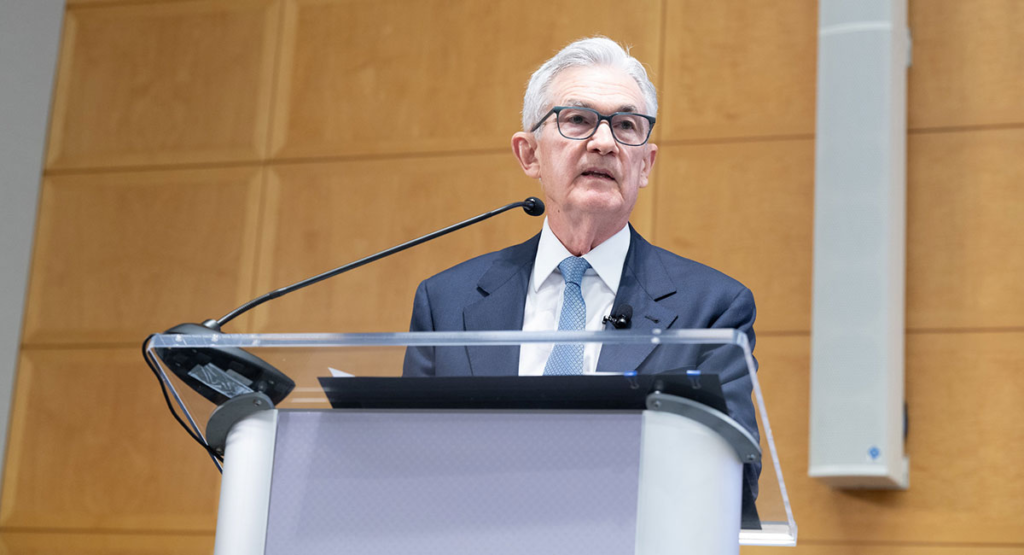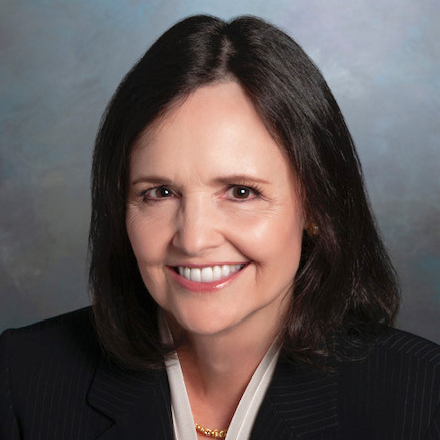
Published in The New York Sun
By one reckoning there’s a 99 percent probability that the Fed will lower the federal-funds rate by September—its last meeting before Americans go to the polls.
The prolonged tease over whether Federal Reserve officials have finished their campaign to fight inflation by imposing restrictive interest rates will likely continue into the first part of next year. The markets, though, are now betting that monetary policymakers will reduce their benchmark interest rate before 2024 is over.
Based on futures pricing data, there is an 86 percent probability the Fed will implement a lower federal-funds rate by its May meeting and a 99 percent probability by its September meeting—the last meeting before Election Day. In remarks Friday, the central bank’s chairman, Jerome Powell, appeared to leave the door open to lower rates in the latter half of 2024.
The presumption of independence between the actions of the nation’s central bank and the economic agenda of the White House renders it crude to ask but still: When does the grumbling begin that Mr. Powell could end up choreographing an economic boost that serves to help the incumbent presidential candidate?
It wouldn’t be the first time a Fed chairman was suspected, rightly or wrongly, of using monetary stimulus to swing an election. Arthur Burns allegedly sought to juice economic performance under pressure from the Nixon administration. Although expansionary monetary policy would increase inflation, a growing economy in the run-up to the 1972 election would help to deliver electoral victory.
Mr. Powell is plenty familiar with the experience of being publicly slammed by the man who selected him to head the Fed. President Trump relentlessly criticized Fed actions after it raised interest rates three times in 2017, the year he took office, and then another four times in 2018.
Mr. Trump was adamant in complaining that the Fed’s rate increases were needlessly constraining economic growth and raising borrowing costs. “I personally think the Fed should drop rates,” he told reporters in April 2019. “I think they really slowed us down. There’s no inflation.”
As it turns out, the Fed did opt to reduce interest rates three times before the end of 2019. That happened at its July, September, and October meetings. Explaining the decision following the third cut, Mr. Powell acknowledged strong household spending, a healthy job market, rising incomes, and solid consumer confidence. In contrast, business investment and exports were weak, and manufacturing output had declined.
Mr. Powell also expressed particular concern that inflation was running below the Fed’s two percent objective. “We’re mindful that continued below-target inflation could lead to an unwelcome downward slide in long-term inflation expectations,” he observed, noting that using the Fed’s policy tools to achieve two percent inflation was necessary to maintain “credibility.”
No doubt mindful as well that the Fed’s about-face on interest rates might be seen as having succumbed to Mr. Trump’s jawboning, Mr. Powell carried out a formal review of the Fed’s monetary policy framework that included a series of Fed Listens public engagement events held around the country with various community groups “to hear about how our policies affect peoples’ daily lives and livelihoods.”
The exercise resulted in a revised monetary policy framework, approved by Fed officials in August 2020. It reaffirmed the two percent inflation target officially adopted in the previous 2012 framework—but with a key difference. The Fed would tolerate above-target inflation in the future to make up for the years of below-target inflation. Fed officials would now seek to achieve inflation that averaged two percent over time.
According to Mr. Powell, the motivation for adjusting the framework was largely prompted by the fact that unemployment had hovered near 50-year lows in 2018 and 2019, well below estimates of its sustainable level, without triggering a significant rise in inflation.
“The robust job market was delivering life-changing gains for many individuals, particularly at the lower end of the income spectrum,” Mr. Powell expounded in his 2020 speech at Jackson Hole. “Many who had been left behind for too long were finding jobs, benefiting their families and communities, and increasing the productive capacity of our economy.”
It is good that Fed officials finally recognized that low unemployment is not inherently inflationary so long as people are productively employed. Yet their earlier preoccupation with finessing their ability to average two percent inflation seems almost quaint these days as subsequent inflation rates have come in multiples higher than the target—causing alarmed monetary policymakers to lift interest rates to their highest level in 22 years.
If the Fed does lower its benchmark rate in 2024, the careful observance of decorum by the White House and the nation’s central bank may suffice to prevent accusations that monetary policy has been utilized to achieve political ends. Mr. Biden is true to the practice of affirming his respect for the Fed’s independence in public pronouncements.
It is, though, also true that Mr. Powell regularly schedules breakfast meetings with President Biden’s top two economic advisers—Secretary Yellen at Treasury and the director of the National Economic Council, Lael Brainard. They formerly served as chairwoman and vice chairwoman, respectively, at the Fed.
Not that there’s anything wrong with Fed officials having personal political views and candidate preferences. The reason appearances matter, though, is that heightened voter concerns over inflated prices for everyday goods combined with out-of-reach mortgage rates have given renewed impetus to the dictum: “It’s the economy, stupid.”
And the Fed is quick to claim its dominant role in determining both factors. “Price stability is the responsibility of the Federal Reserve,” Mr. Powell stated at the press conference following the Fed’s most recent monetary policy-making meeting on November 1.
Pointing out that increased borrowing rates were weighing on business fixed investment and that activity in the housing sector was well below levels of a year ago due to higher mortgage rates, Mr. Powell reiterated the Fed’s commitment to reducing inflation through restrictive interest rates that would likely require a period of below-potential growth and softer labor market conditions.
If the Fed has as much impact over economic performance as its own pronouncements suggest, the real error is that the purchasing power of the dollars earned by American workers—along with their prospects for owning a home and building a secure financial future—are so dependent on the discretionary judgment of Fed officials who have proven so fallible.
JUDY L. SHELTON is a Senior Fellow at the Independent Institute, former Chairman of the National Endowment for Democracy, and former U.S. Director of the European Bank for Reconstruction and Development.

